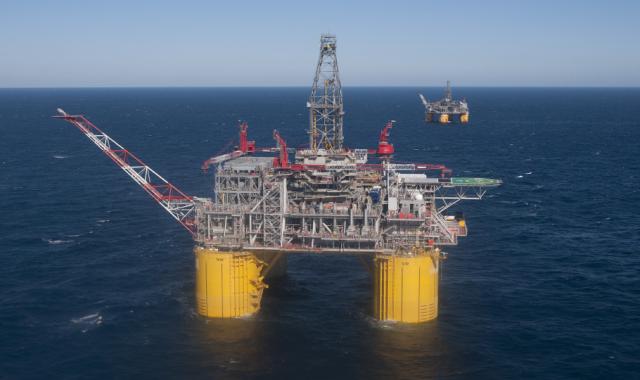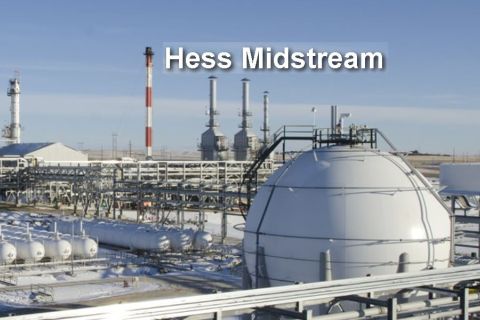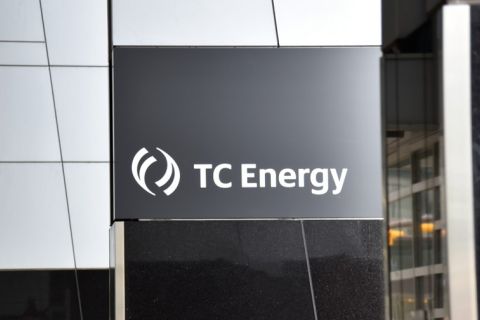
Energy companies are taking their controversial fracking operations from the land to the sea—to deep waters off the U.S., South American and African coasts.
Cracking rocks underground to allow oil and gas to flow more freely into wells has grown into one of the most lucrative industry practices of the past century. The technique is also widely condemned as a source of groundwater contamination. The question now is how will that debate play out as the equipment moves out into the deep blue. For now, caution from all sides is the operative word.
“It’s the most challenging, harshest environment that we’ll be working in,” said Ron Dusterhoft, an engineer at Halliburton Co., the world’s largest fracker. “You just can’t afford hiccups.”
Offshore fracking is a part of a broader industrywide strategy to make billion-dollar deep-sea developments pay off. The practice has been around for two decades yet only in the past few years have advances in technology and vast offshore discoveries combined to make large scale fracking feasible.
While fracking is also moving off the coasts of Brazil and Africa, the big play is in the Gulf of Mexico (GoM), where wells more than 161 km (100 miles) from the coastline must traverse water depths of a mile or more and can cost almost $100 million to drill.
Those expensive drilling projects are a boon for oil service providers such as Halliburton, Baker Hughes Inc. and Superior Energy Services Inc. Schlumberger Ltd., which provides offshore fracking gear for markets outside the U.S. GoM, also stands to get new work. And producers such as Chevron Corp., Shell and BP may reap billions of dollars in extra revenue over time as fracking helps boost crude output.
Fracking in the GoM is expected to grow by more than 10% over a two year period ending in 2015, said Douglas Stephens, president of pressure pumping at Baker Hughes, which operates about a third of the world’s offshore fracking fleet.
Dumped overboard
That’s a reasonable and worthwhile investment, as the industry grapples with the challenge of “how to best fracture and stimulate the rocks” bearing crude oil, said Cindy Yielding, director of appraisal at BP.
At sea, water flowing back from fracked wells is cleaned up on large platforms near the well by filtering out oil and other contaminants. The treated wastewater is then dumped overboard into the vast expanse of the GoM, where dilution renders it harmless, according to companies and regulators.
The treatment process is mandated under Environmental Protection Agency (EPA) regulations. In California, where producers are fracking offshore in existing fields, critics led by the Environmental Defense Center have asked federal regulators to ban the practice off the West Coast until more is known about its effects.
Harmed sea-life
Offshore fracking in the GoM should also be subject to a detailed environmental review, said Tony Knap, director of the Geochemical and Environmental Research Group at Texas A&M University. The concern is that chemicals used in the fracking fluid that’s released in the GoM could harm sea life or upset the ecosystem, said Miyoko Sakashita, oceans director at the Center for Biological Diversity.
Rock-crushing engines
“One of the key problems is nobody has really looked at the environmental impacts of offshore fracking, and we find that incredibly concerning,” she said in an interview. “Nobody knows what they’ve been discharging and in what amounts.”
A spokesperson for the EPA was not aware of any studies having been done on the impact of offshore fracking as the practice has long been viewed as “a somewhat short-term discharge and often mixed with other discharges.”
To frack some of the world’s biggest offshore wells, roughly seven million pounds of people and gear, including rock- crushing engines and tons of sand to prop open cracks in the rock, must be crammed onto a 300-foot-long ship, called a stimulation vessel.
As demand for offshore fracking has grown, oil service companies have increased the global fleet of fracking ships by 31% since 2007, according to a survey by Offshore Magazine, creating a market almost as large as Russia’s onshore industry. The pumping horsepower used to frack wells—a measure of supply—is expected to grow another 28% by the end of 2018, to 1.2 million horsepower, estimates Houston-based PacWest Consulting Partners.
The new frontier in the GoM for companies including Chevron and Shell is an underground zone called the Lower Tertiary, an older layer of the earth’s crust made of denser and harder-to-crack rock.
Pancaked layers
Deepwater wells cut through multiple pancaked layers of oil-soaked rock, and each layer must be fracked to get the most oil out—a task that can take a full day to get to the bottom of the well. Halliburton and others have figured out a way to save time and money by fracking all those layers in one trip down the well, instead of doing each layer separately.
The more intense fracking means larger volumes of water, sand and equipment are needed to coax more oil out—and bigger boats to carry it all.
“It’s getting more sophisticated,” James Wicklund, an analyst at Credit Suisse in Dallas, said in a phone interview. “The volumes needed, especially for these lower tertiary fracks, are huge.”
Recommended Reading
Hess Midstream Announces 10 Million Share Secondary Offering
2024-02-07 - Global Infrastructure Partners, a Hess Midstream affiliate, will act as the selling shareholder and Hess Midstream will not receive proceeds from the public offering of shares.
EQT CEO: Biden's LNG Pause Mirrors Midstream ‘Playbook’ of Delay, Doubt
2024-02-06 - At a Congressional hearing, EQT CEO Toby Rice blasted the Biden administration and said the same tactics used to stifle pipeline construction—by introducing delays and uncertainty—appear to be behind President Joe Biden’s pause on LNG terminal permitting.
TC Energy’s Keystone Back Online After Temporary Service Halt
2024-03-10 - As Canada’s pipeline network runs full, producers are anxious for the Trans Mountain Expansion to come online.
Enbridge Announces $500MM Investment in Gulf Coast Facilities
2024-03-06 - Enbridge’s 2024 budget will go primarily towards crude export and storage, advancing plans that see continued growth in power generated by natural gas.
Plains All American Names Michelle Podavin Midstream Canada President
2024-03-05 - Michelle Podavin, who currently serves as senior vice president of NGL commercial assets for Plains Midstream Canada, will become president of the business unit in June.





